Thermal Vision and Camouflage: A reality check
As this is a collaborative project with Avustaja, and as a result this article is not Patreon exclusive!
Introduction
While Night Vision is all the craze at the moment, thermal vision or imaging is changing the realities of modern warfare as we can see in Ukraine at the moment. And if you keep an eye on the tactical and especially the camouflage community, you might have heard the word “multispectral” more than once, as it is popping up more frequently these days.
Being the camo geeks we are, Avustaja and I teamed up to take a closer look at some of the realities of thermal vision and how it actually impacts the nature of camouflage.
In order to do so, we organized some interesting items to try out. Avustaja invested in a decent thermal device and we brainstormed how to visualize the topic in a basic way for everyone to understand.
So let’s start with the bare physics, before we look at some camouflage items and how thermal vision is leveling the playfield.
The physics of thermal vision: wavelengths and the magic behind it
Thermal radiation is an electromagnetic radiation with most of its emissions being in the Infrared spectrum. I already touched on the topic of Infrared in previous articles about night vision. Simply put: the human visual spectrum only manages to perceive a small portion of light – roughly everything from 400 nanometers to 750 nanometers (nm) wavelength.
To give you a better idea of the electromagnetic spectrum and how human vision fits into it, take a look at the following visualization.
Night Vision Devices (NVDs) start where human vision ends, making use of Infrared in the spectrum of 750 to approximately 2000 nanometers – even though the infrared spectrum ranges to 15000 nm wavelength. Exact figures are not known, with the specs of these devices often classified for obvious reasons.
Thermal devices make use of the full range of the “thermal infrared” spectrum, meaning everything from:
- Near Infrared – NIR: 750 nm – 1400 nm
- Short Wavelength Infrared – SWIR: 1400 nm – 3000 nm
- Medium Wavelength Infrared – MWIR: 3000 nm – 8000 nm
- Long Wavelength Infrared – LWIR: 8000 nm – 15000 nm
With thermal infrared, colors and their reflection levels of light become irrelevant, only heat signatures and their silhouettes and contrasts are visible, making this spectrum a completely different animal than night vision. The contrasts are hot and cold and what is in between the two.
Methodical remarks and caveats
Thermal Device and items used
The thermal device used in this test is the Pulsar Axion 2 XG35. It is widely available and serves as a good reference point. Below are some of its specs and relevant information. For more visit Pulsar.
| Main Specs | |
| Sensor | 640×480 pix. @ 12 µm (NETD <40 mK) |
| Objective lens | F35 / 1.0 |
| Magnification, x | 2.5 – 20 (x8 zoom) |
| Field of view (HxV), degrees / m@100m | 12.5 x 9.4 / 21.9 x 16.4 |
| Detection range | 1750 m |
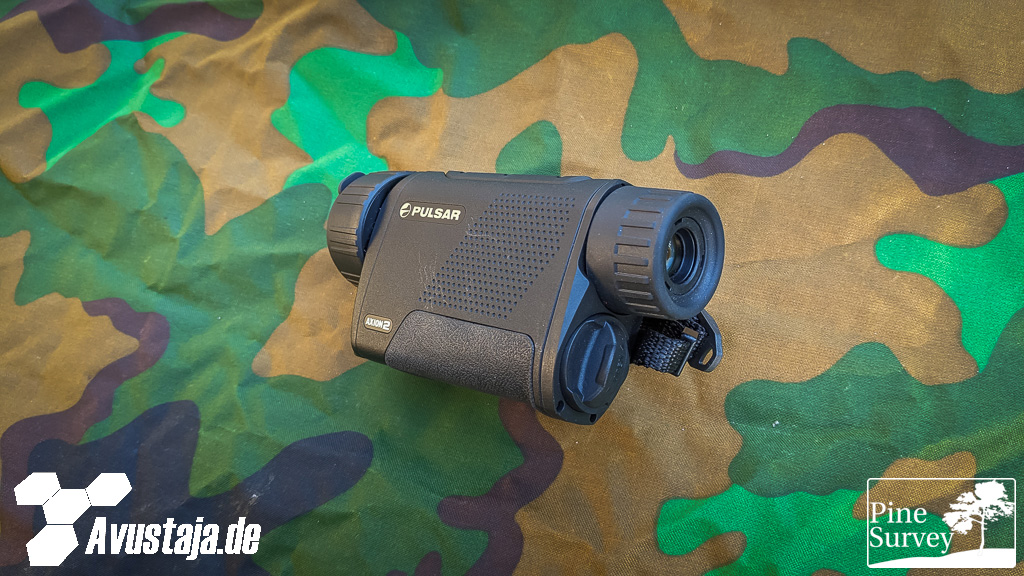
For this test the following Items were used:
- British Sniper Ghillie “Thermal Individual Camouflage Suit (MK.I)” by Roctec/CQC 2001
- Heavy Mesh blanket (a standard material)
- Ikea Fleece Blanket “Thorgun” [no pun intended – no, really!]
- Phantomleaf Python Poncho, with additional 3D elements
- Ghosthood – Ghost-Hoodie, with additional 3D elements
- Standard NyCo Uniform (PenCott Sandstorm)
- Space blanket
Important Disclaimer: Please note that none of the above mentioned items that were used for the field test are or were marketed as “anti thermal”, dedicated thermal suite etc. with the exception of the British Sniper Ghillie!
The various items were used to demonstrate the difficulty to hide one’s thermal signature, and why dedicated solutions are necessary! And as always – we do not claim any scientific standard, even if we try to achieve a certain level of comparability.
The various modes of the thermal device
Like most thermal devices, the Pulsar Axion 2 XG35 provides the user with several modes, like “black hot”, “rainbow”, “red hot” and “white hot”. The pictures seen here are using the “white hot” mode only, because otherwise the article would be too extensive in length.
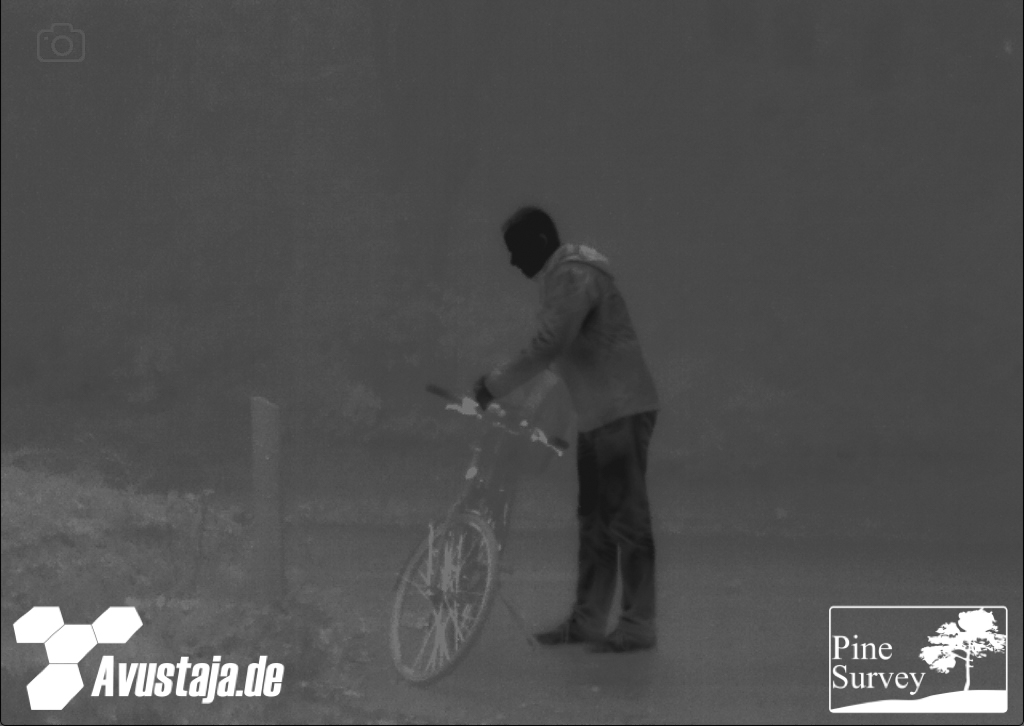
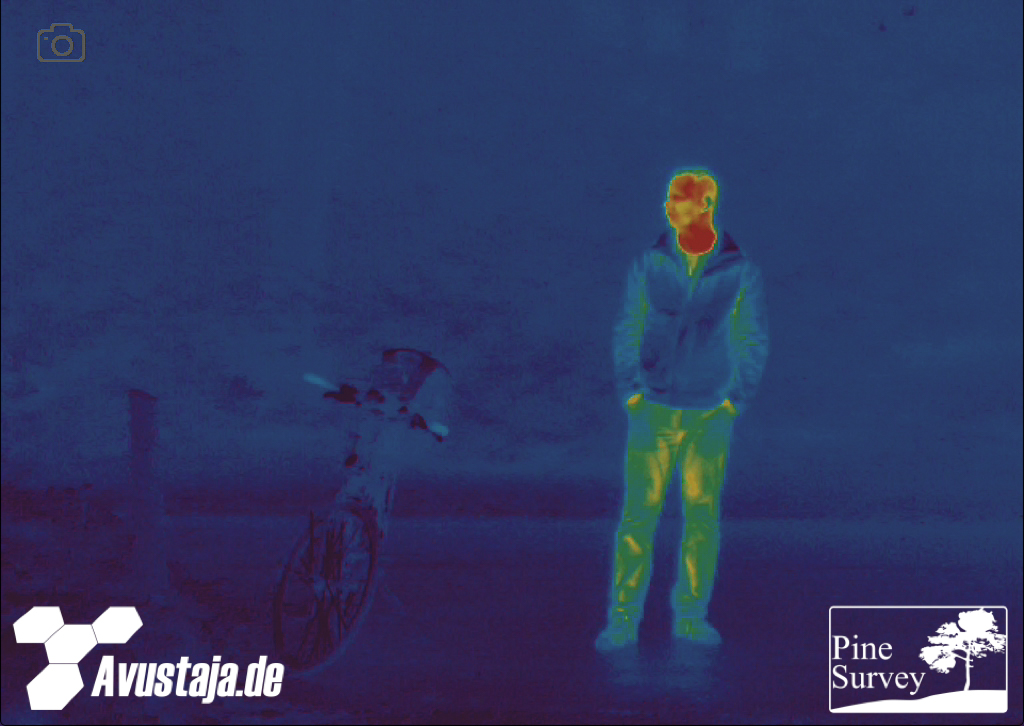

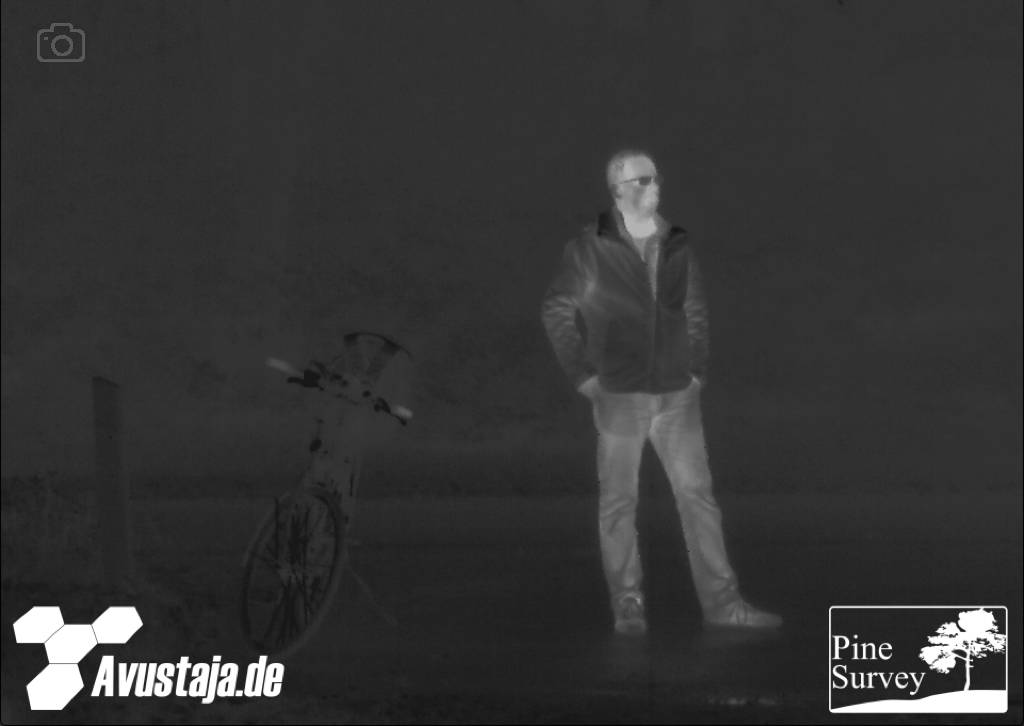
Environmental factors
The photoshoot took place in Autumn, with temperatures being below 20° Celsius. During the first session the temperature was around 16° Celsius. The second one was around 10° Celsius. This has to be taken into account, as it affects body temperature as well as that of the surroundings.
Time is a factor as well, especially with thermal vision. All the garments and items were worn only a short amount of time, which shows
- how fast garments heat up on the one hand, and
- that others are not as safe as they appear to be on the other hand – more on that later.
Before taking the pictures, a waiting period of 10-15 minutes was taken into account, in order to let the items heat up from body temperature.
With that being said, let’s look at the actual pictures from the field.
Thermal Vision in the field
Location
The short and medium distance pictures (15m & 100m) were taken in a forest in the Netherlands, while the long distance pictures (500m) were taken in the plain of the lower Rhine region in Germany.
The forest in the Netherland features the dense underbrush, high grass as well as coniferous trees, with the random deciduous tree (birch). If not stated otherwise the pictures are taken in a clear line of sight.

Item 1 – Standard NyCo Uniform

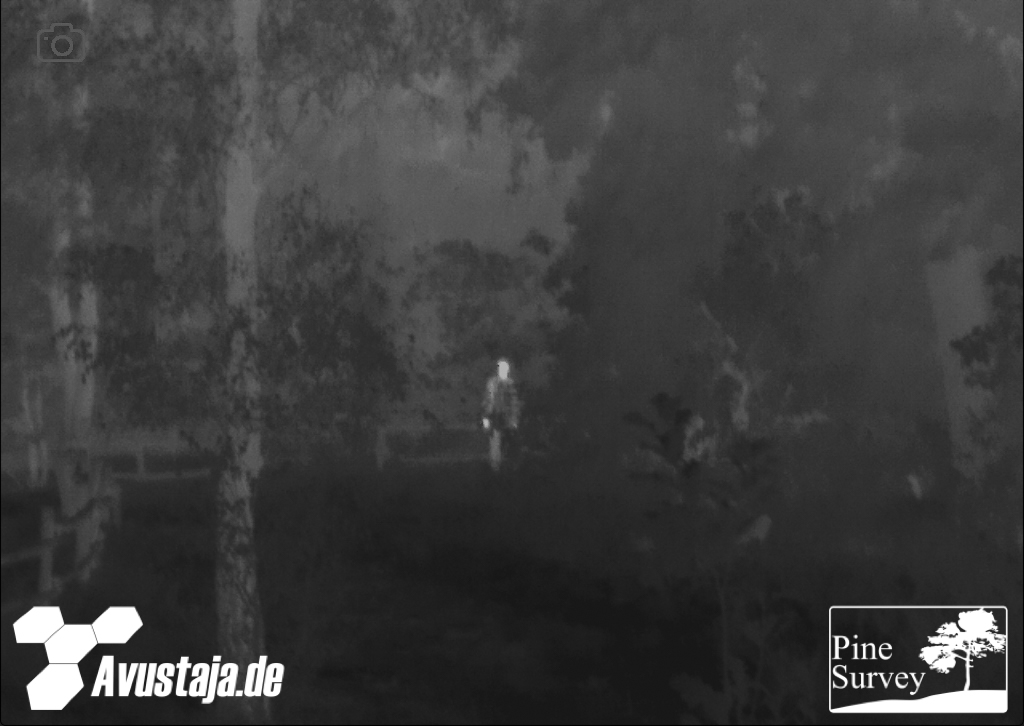
Starting at close range – 15m. The standard NyCo uniform suppresses the heat transmission of the person shown to a minimal extent. This is the result of the usual heat insulation one might get from a garment. In comparison to the cold surroundings, the difference is apparent however, showing the cold dark backdrop in contrast to the brighter silhouette of the body.
Hands and face, being the uncovered body parts shine bright white and make the person quickly identifiable. The pants, which were closer to the body than the more baggier shirt, appear brighter, thus showing the heat transmission from close body contact.
Kneeling would make no difference in this situation, as the heat signature is visible and a change in the outline of the person would not hide that.
Looking at the same outfit at 100m distance, with the person partially hidden behind an underbrush, the above mentioned statements apply. Hands and face are bright white, the uniform has heated up a bit more over time and the silhouette is clearly visible. Even though the leg on the left side could be mistaken for a post of the fence, the outline of the person is quickly identifiable.
Having in mind, this is a picture and not a video, it should be underlined that this would be even more apparent in real time and when looking at a video feed. The picture also shows how effective foliage can cover heat signatures, given there is space between the person and the foliage for the heat to dissipate.
Item 2 – Loft Jacket
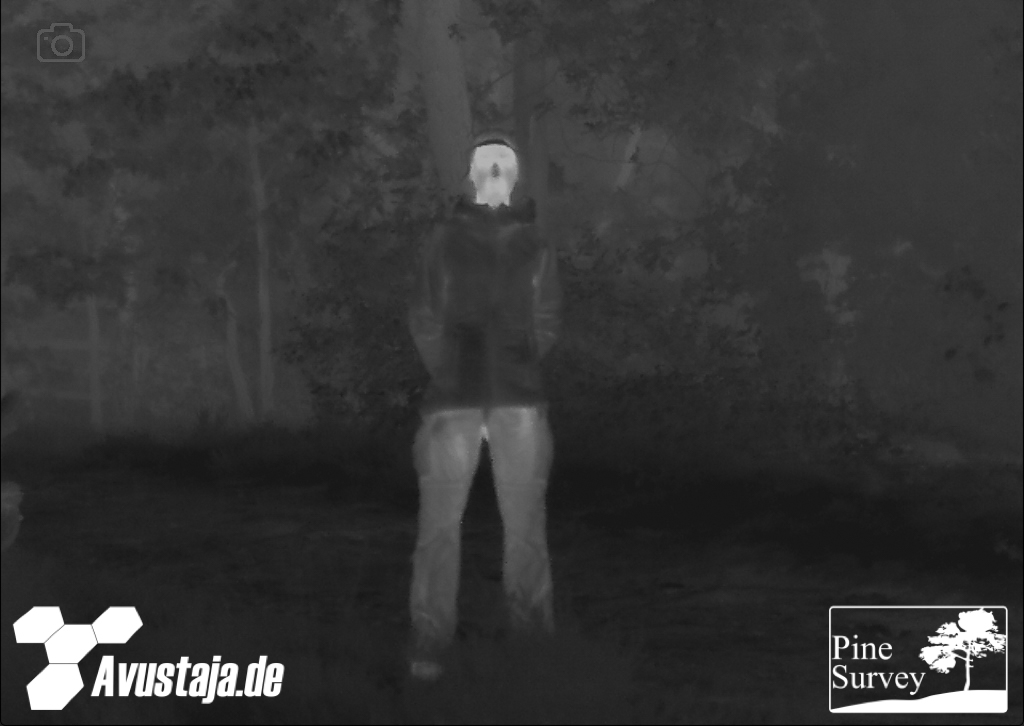
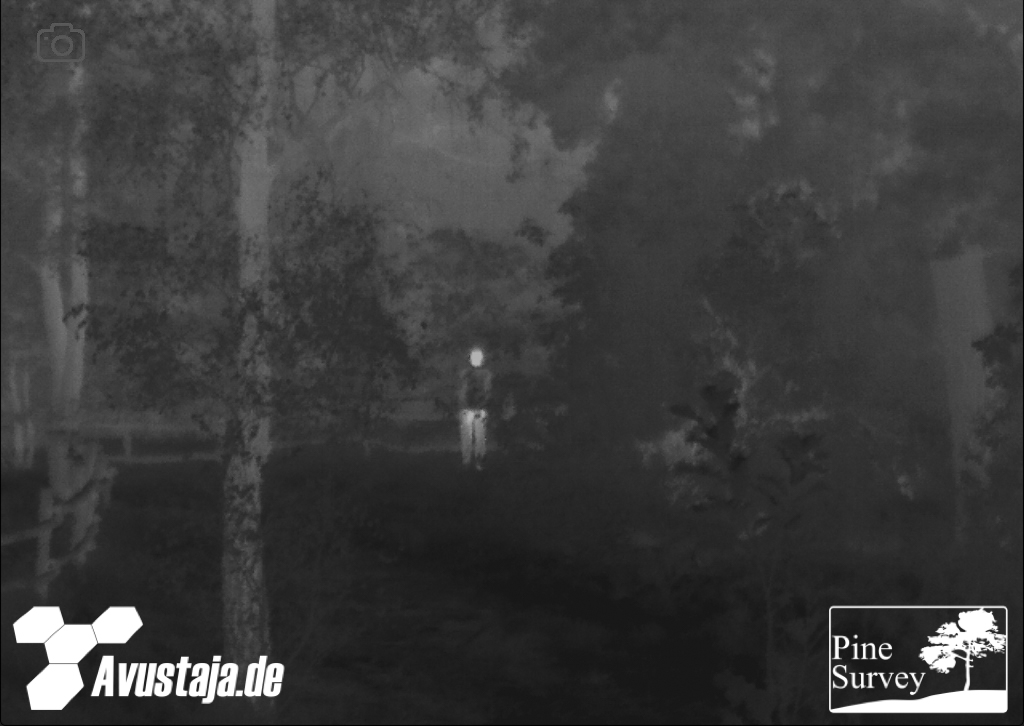
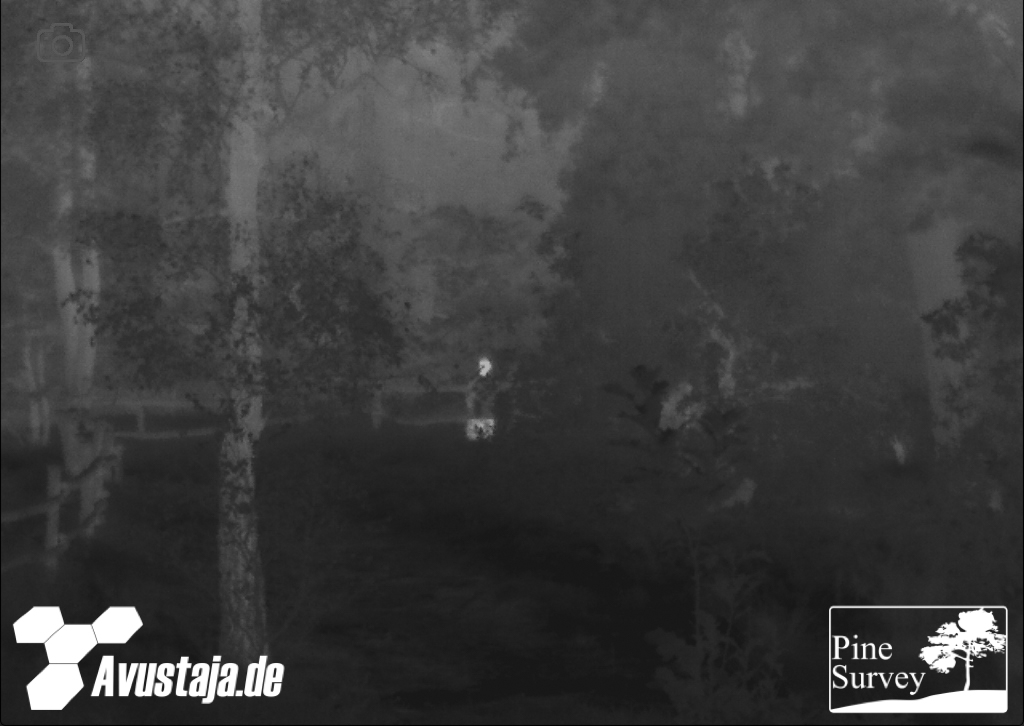
First off: for this a Helikon-tex Wolfhound Hoodie was used, which is insulated with 67g loft material. This info is much more relevant in terms of insulation than the brand being used. The jacket was worn in combination with the above mentioned NyCo trousers.
As one can immediately tell, the loft jacket does in fact block the heat signature for a certain amount of time. This is achieved by creating an air pocket between the outside and the body, keeping the warmth on the inside (as a loft jacket should). As a result the upper body is blending in with the heat signature of the surrounding environment, while the pants and face are clearly visible. You can also tell how the NyCo pants have warmed up by now, being even more visible than before. This is the impression at 15m distance.
At a 100m distance you can see both in the kneeling and standing position, how the loft jacket suppresses the heat signature of the upper body, while the face and the legs are bright indicators of a living individual being present.
One thing to note and this can be seen at the arms and armpit areas: this kind of mitigation is only suitable for a short amount of time, as the loft jacket warms up and loses its suppression advantage in a short amount of time. Adding to that – given the fact this is a loft jacket, this scenario is not suitable for warmer environments.
Item 3 – Ikea Fleece Blanket “Thorgun”
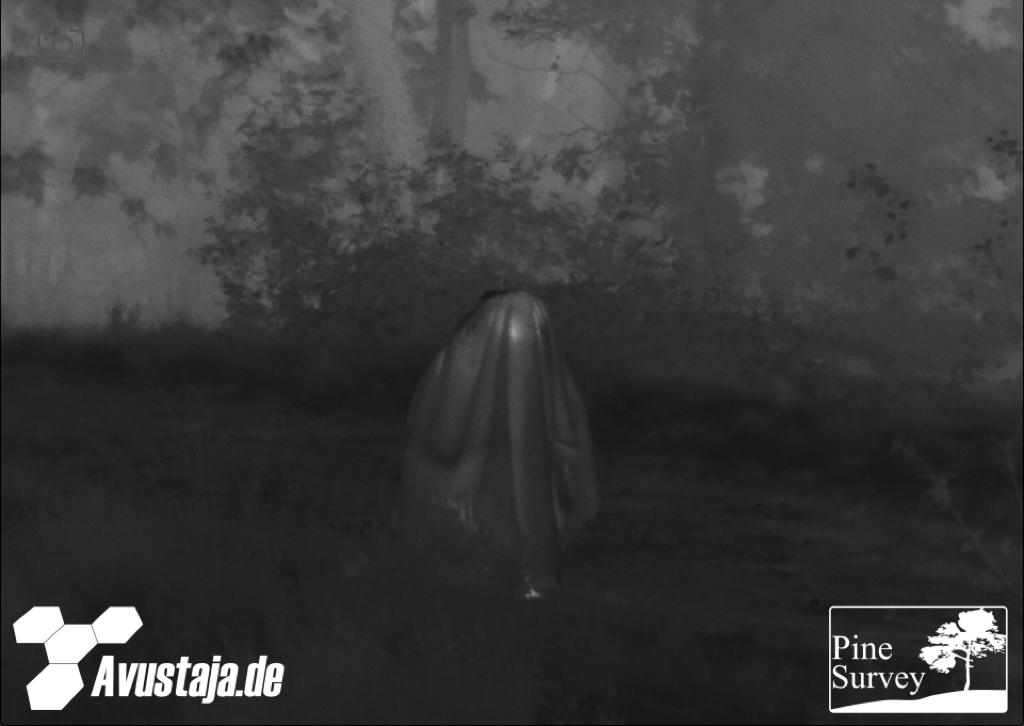
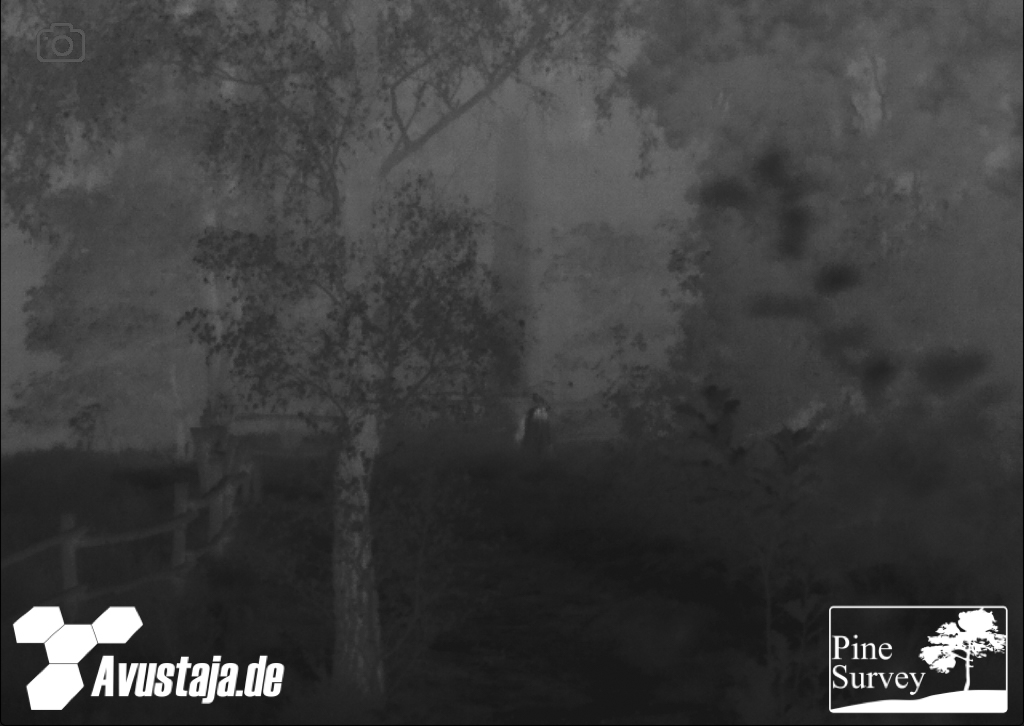
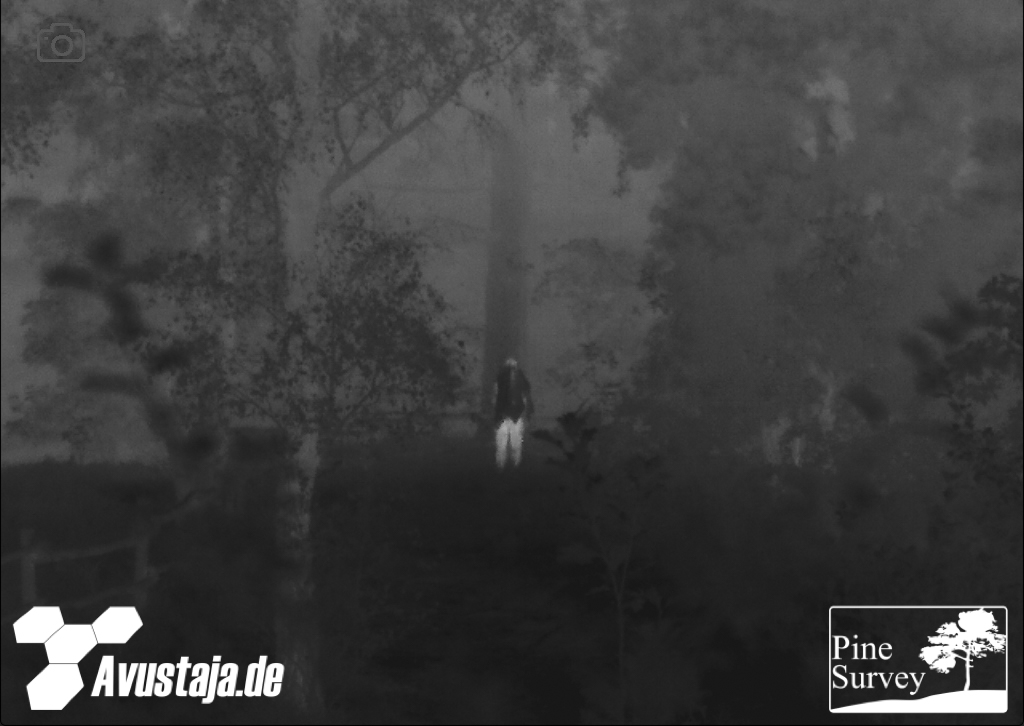
Already at 15m distance, one can see how effective the fleece blanket is in hiding the heat signature. Since there are several areas where the blanket is not touching the body directly, a similar and better effect is being achieved as with the loft jacket.
That being said, areas with direct body contact heat up fast and can be detected by a thermal device. As a result, one can note only a short time effect and just like the loft jacket, this solution is not ideal for hot environments. Adding to that: the blanket only covers parts of the body – as shown in this case, one has to kneel down in order to hide the legs.
Another aspect, which has to be considered: the strong mitigation of the thermal signature results in a negative/black inverted spot that is noticeably darker than the surroundings, thus creating attention.
When looking at the pictures from 100m distance, this stark contrast can be seen when looking at the bright pants, the very dark upper torso as well as the less conspicuous surroundings. Looking at the person itself, one can see the various grades of heat transmission. The body parts that come in contact with the blanket (arms, head) and the legs, which are not covered at all.
Item 4 – Heavy Mesh Blanket
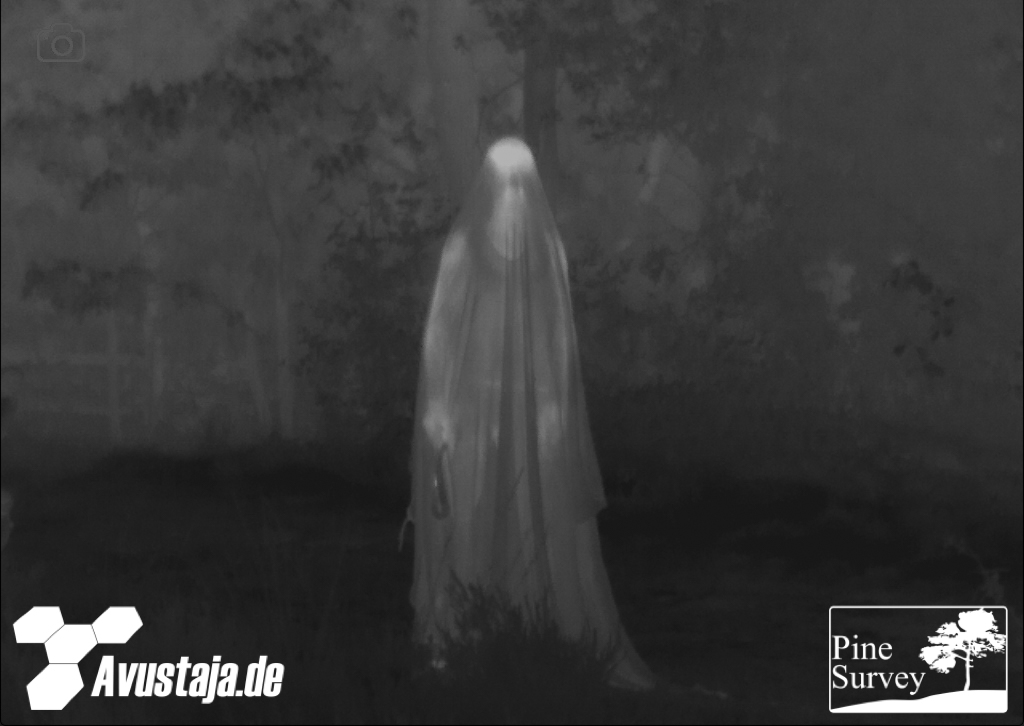
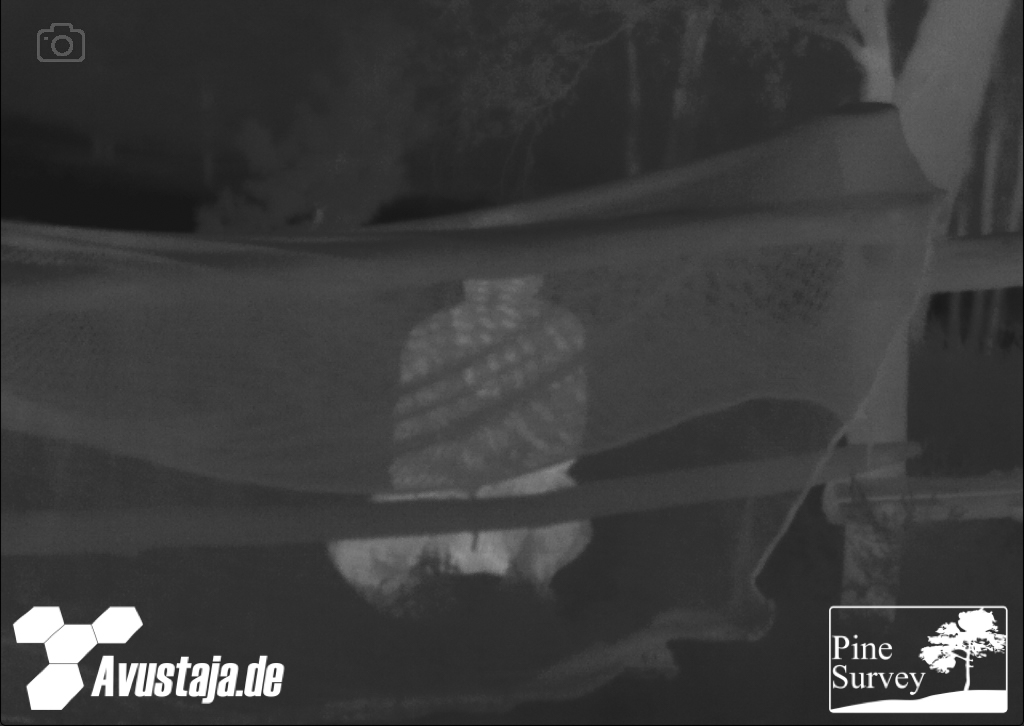
As mesh is one of the base materials being used in several thermal mitigation solutions which are currently being sold on the market, it is worth looking at the material itself.
At a short distance, one can see how it is possible to mitigate the thermal signature of an individual by placing a barrier between the observer and the observed. “Mitigate” is the most important aspect here, as it does not block or hide the thermal signature. The silhouette can still be observed behind the netting.
When put over a person, one gets a ghost like image that clearly shows the points of contact with the body and the resulting heat transfer. What can be concluded from this? Mesh does not block heat but is able to create a barrier between the body and the material, with minor mitigating results. As a result it would only make sense for foxholes or similar covers, as it creates a visual barrier – similar to foliage. That being said, the heat signature is visible through the mesh, if it is not properly adjusted and adapted.
Item 5 – Phantomleaf Python Poncho
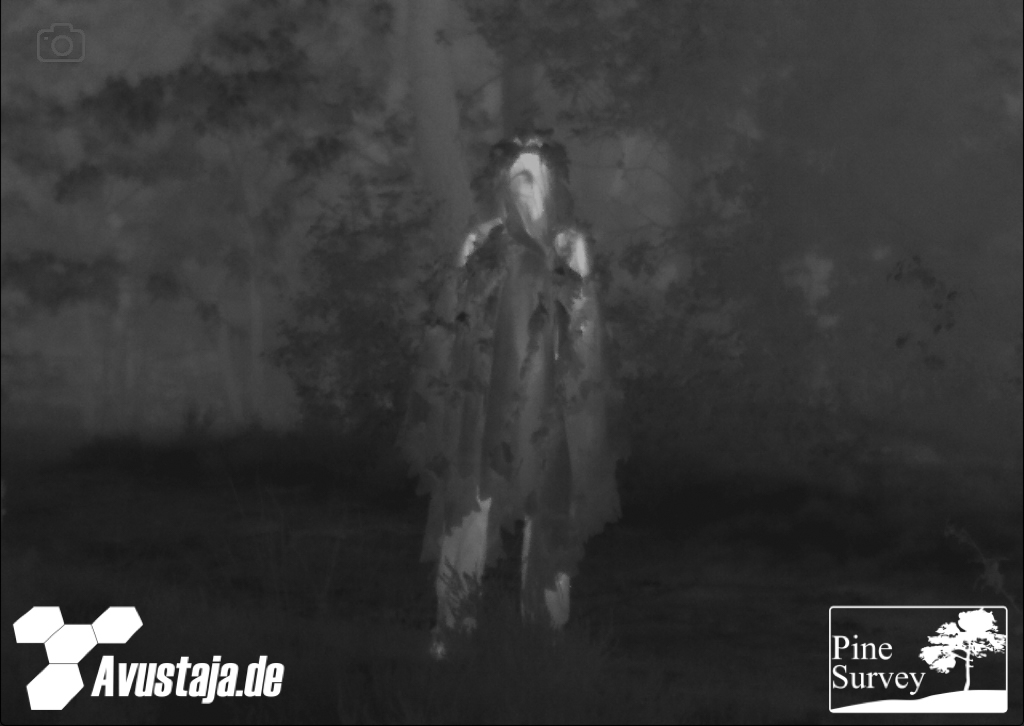
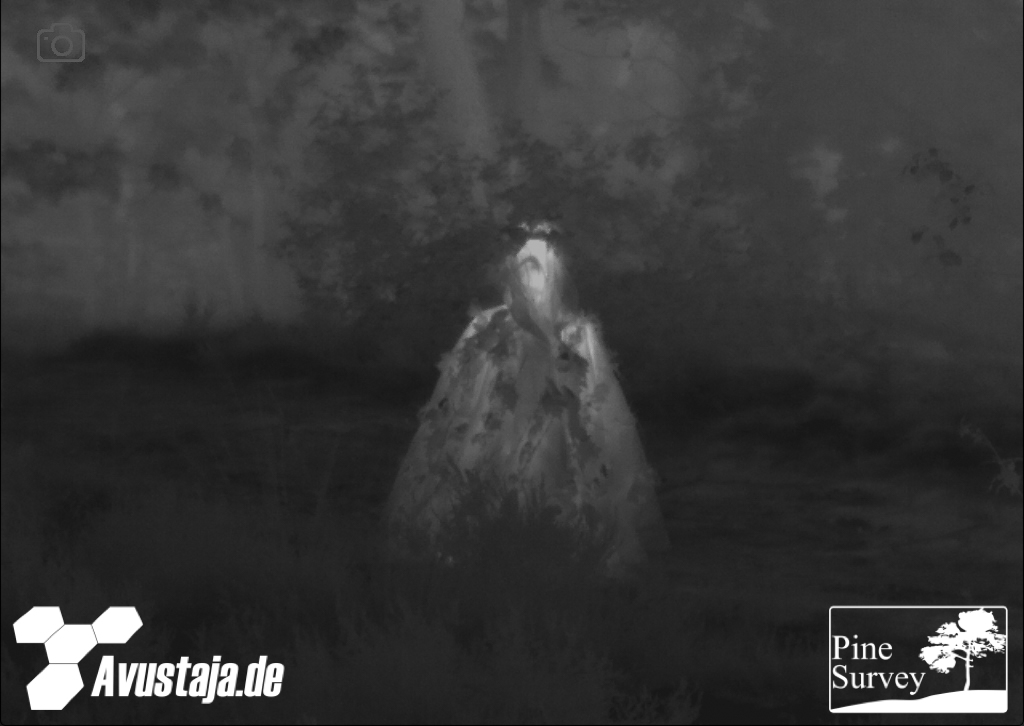
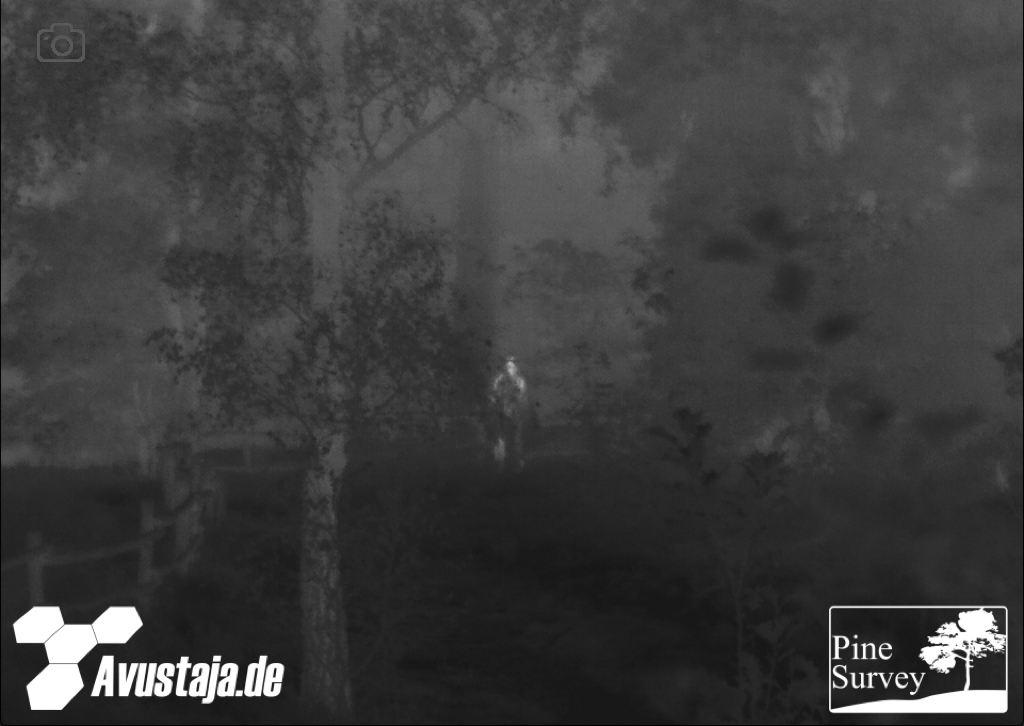
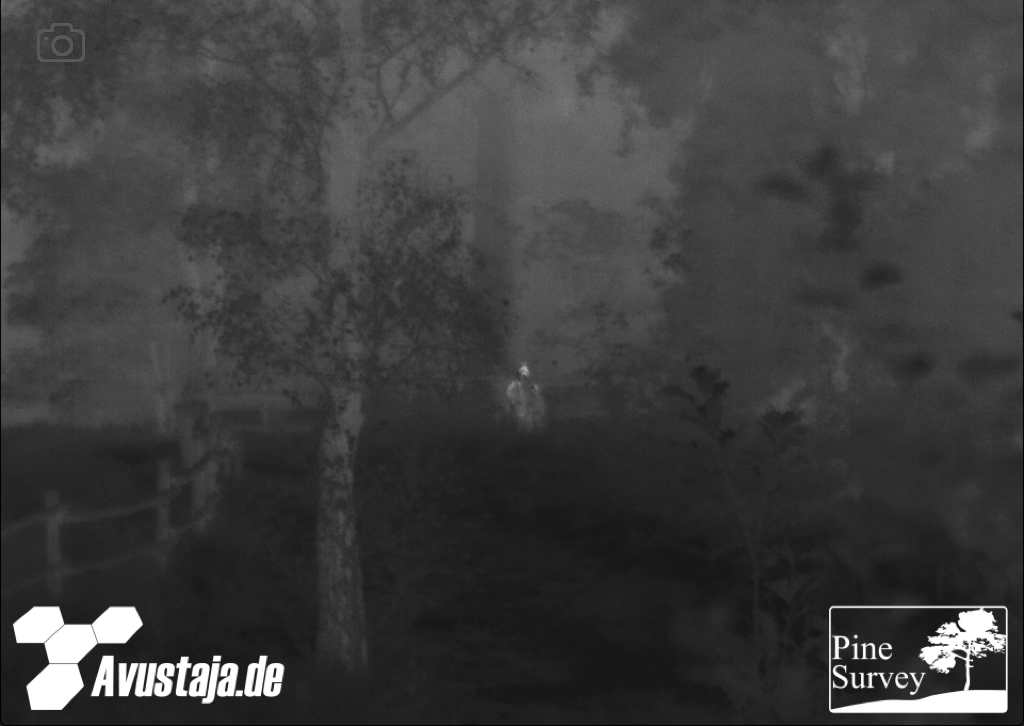
In case you skipped the disclaimer: the following product is not being marketed as a thermal mitigation garment.
That being said, we took a closer look at the Python poncho by Phantomleaf. Having in mind the issue of basic mesh netting, the optional 3D elements were added to the poncho, since it provides an additional camouflage feature. This not only resulted in an improved visual camouflage effect, but also had several consequences in the thermal range.
First of all, one can see an elevation in the thermal spectrum as the poncho does heat up, especially around the areas with direct body contact – something we have already seen with the previous items. At the same time, the use of the poncho has the same effect as the blanket, the loft jacket or the mesh net: it creates distance to the body which mitigates the thermal signature.
With the 3D elements attached, another effect comes into play. These 3D elements create cooler parts on top of the poncho as they are on the outside and not in direct contact with the body. As a result they create a foliage-like thermal pattern of warmer and cooler sections that help disrupting the human silhouette.
When kneeling, this is a viable short term thermal mitigation, keeping in mind that the poncho will heat up during movement and does not completely hide the thermal signature.
The thermal device does pick up the heat signature, especially the areas which are not fully covered, like the face and legs. That being said the human silhouette is partially hidden as if one is hiding behind foliage.
Item 6 – Ghosthood – Ghost-Hoodie
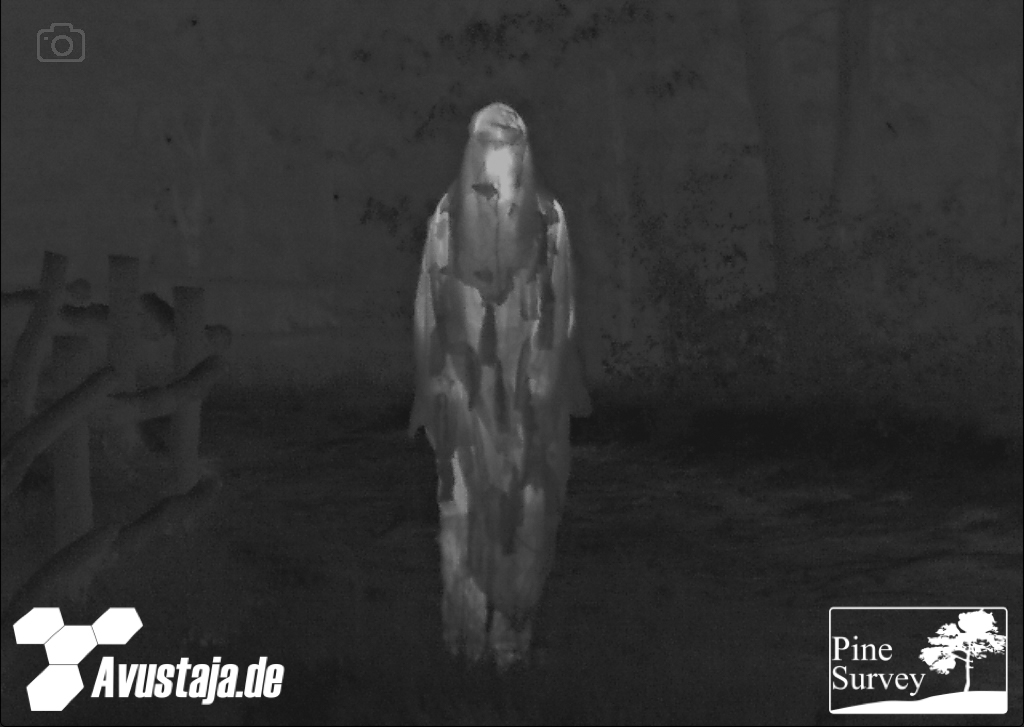
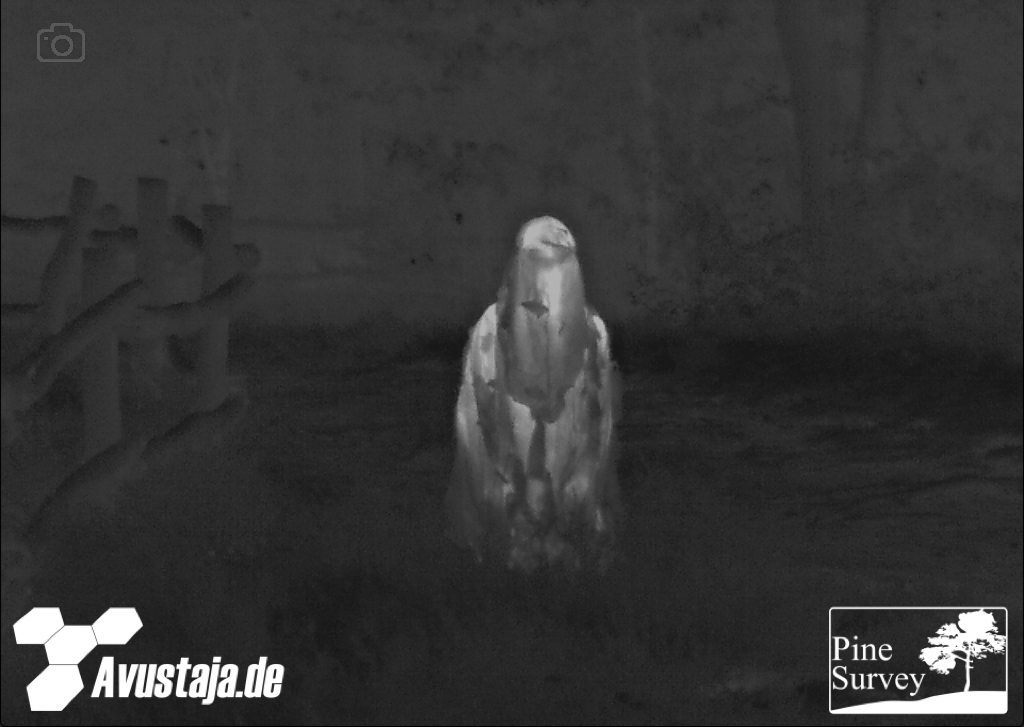
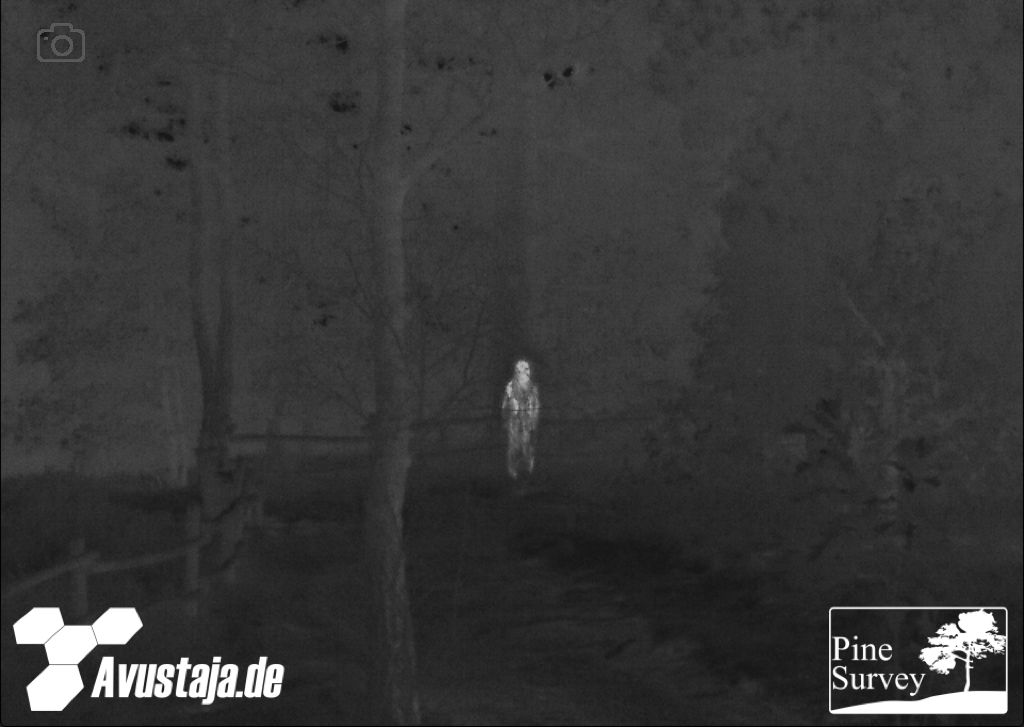
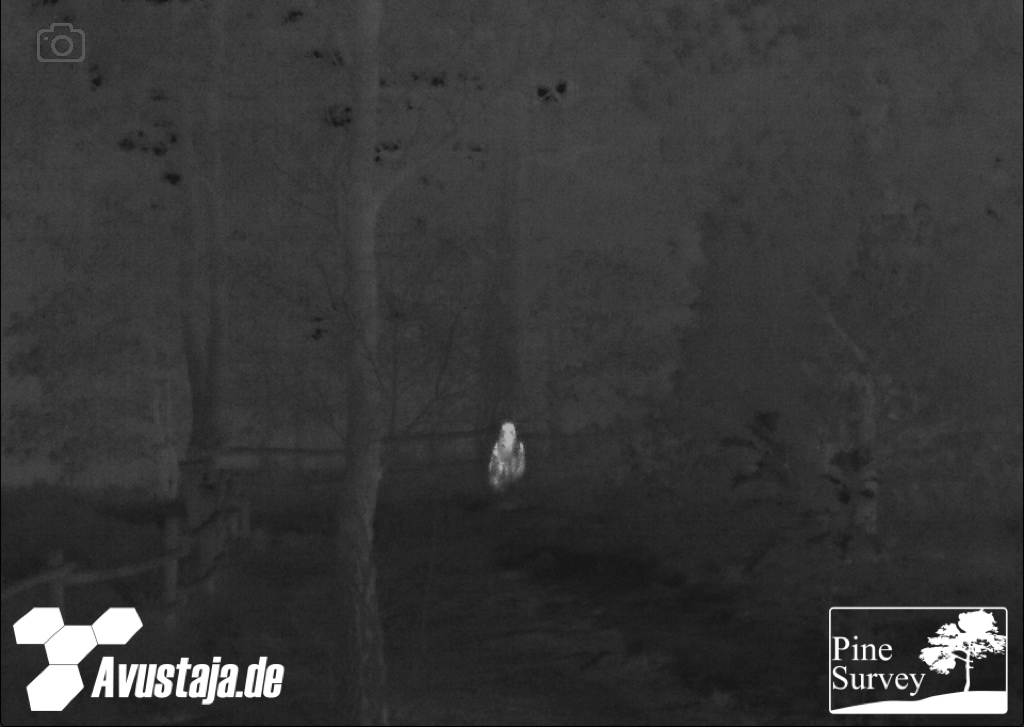
Different company, similar system. The Ghost-Hoodie, by Ghosthood was fitted with the available 3D elements that improve the garment’s camouflage properties in the visual spectrum. Again, if you skipped the disclaimer: this product is not marketed as a thermal mitigation garment.
Just like Phantomleaf’s poncho, one can observe that the lightweight material creates space between the body and Ghost-Hoodie. However due to the thinner material, the heat transmission is more apparent than with the other items. As a result the heat signature is clearly visible. That being said, the added 3D elements create a strong thermal pattern that disrupts the silhouette, similar to the Phantomleaf pocho.
As the heat transfer is stronger in this case, the thermal device can detect the person and show him/her more clearly. The difference to the surrounding environment is just too high.
Item 7 – British Sniper Ghillie
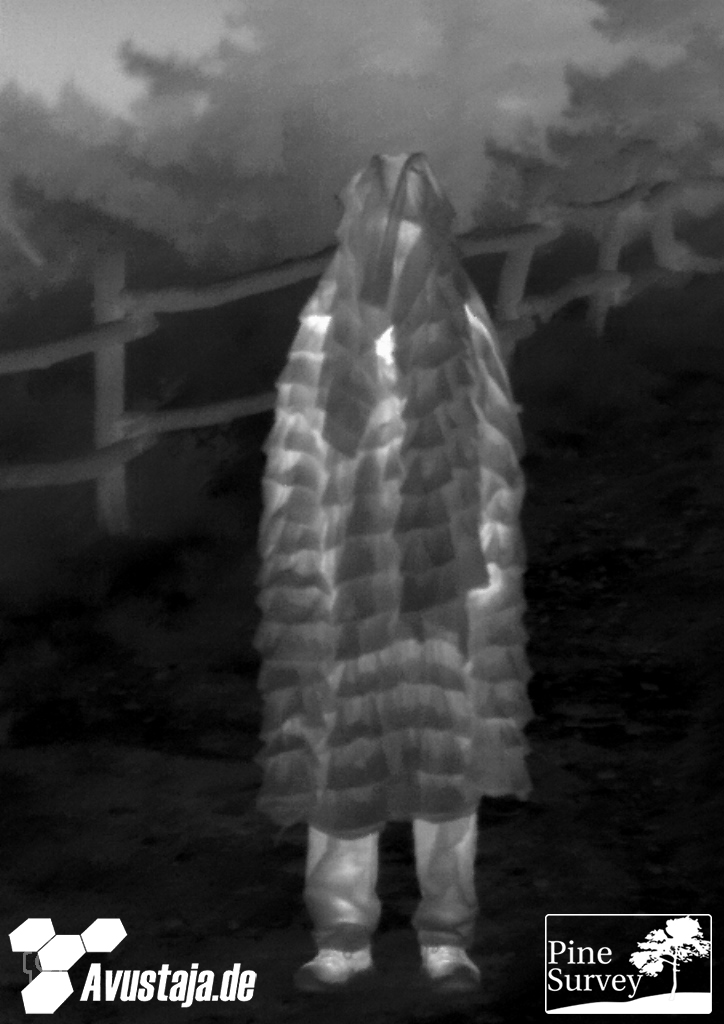
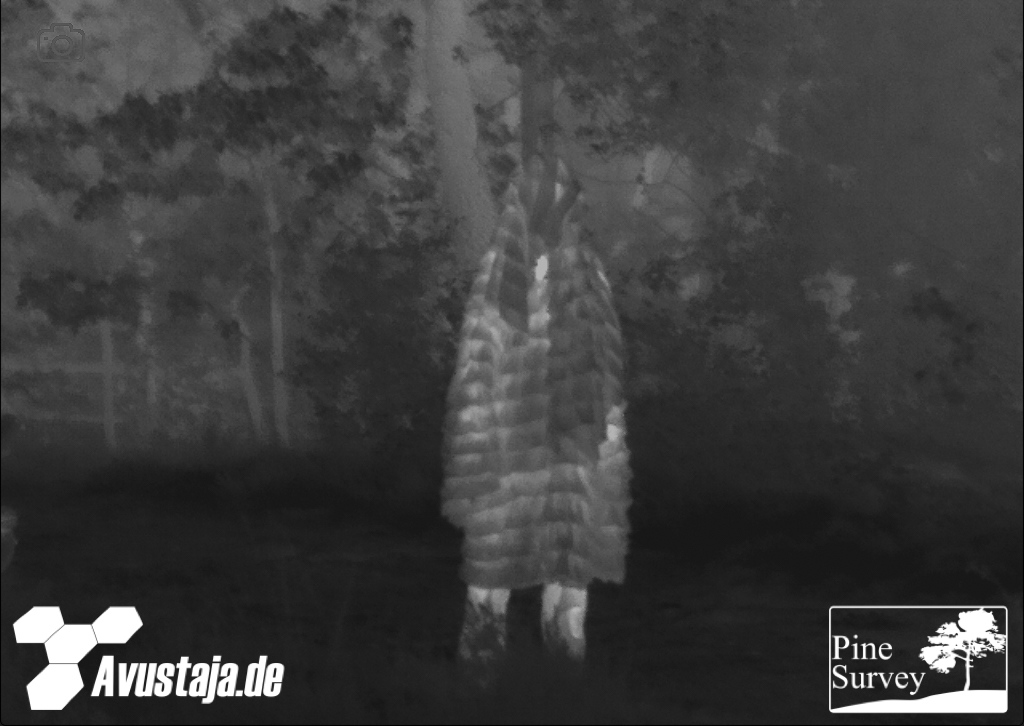
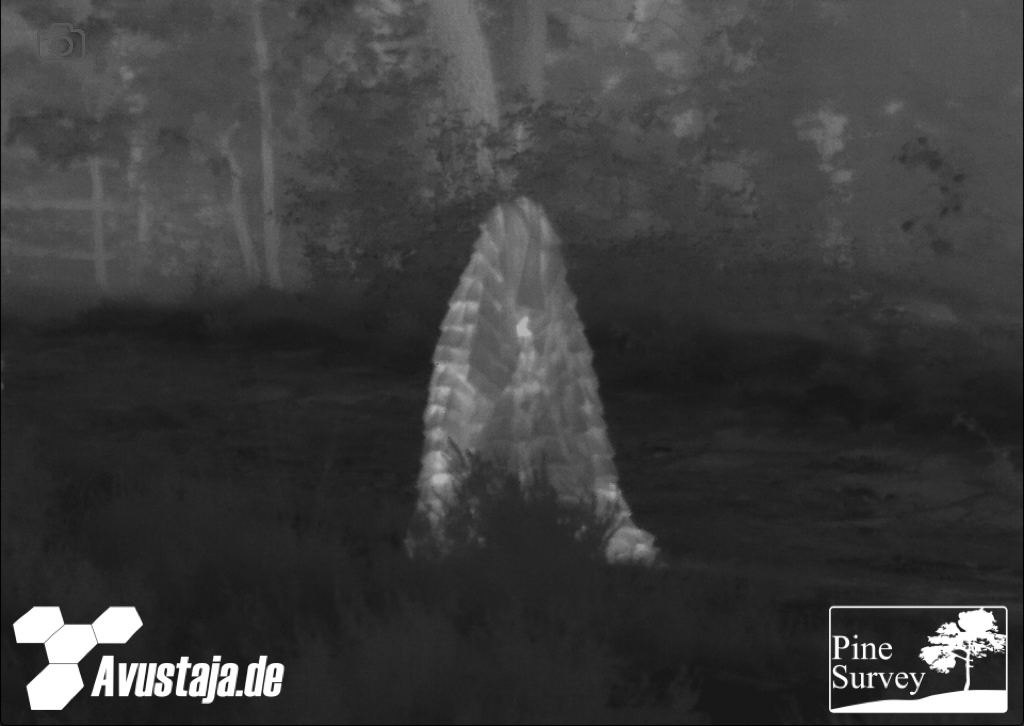
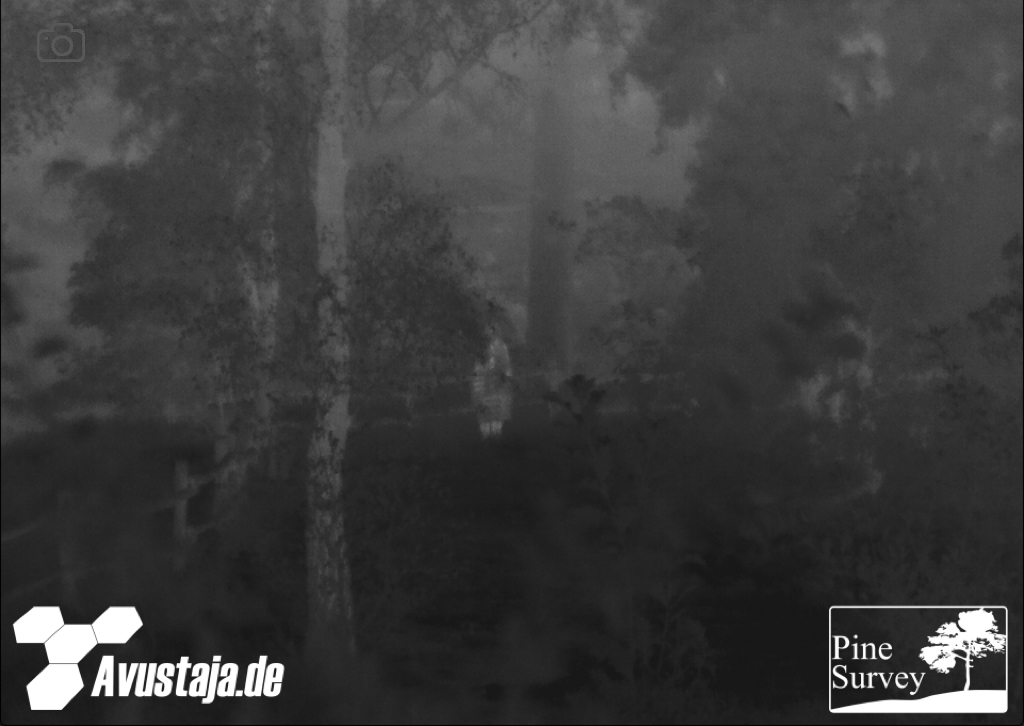
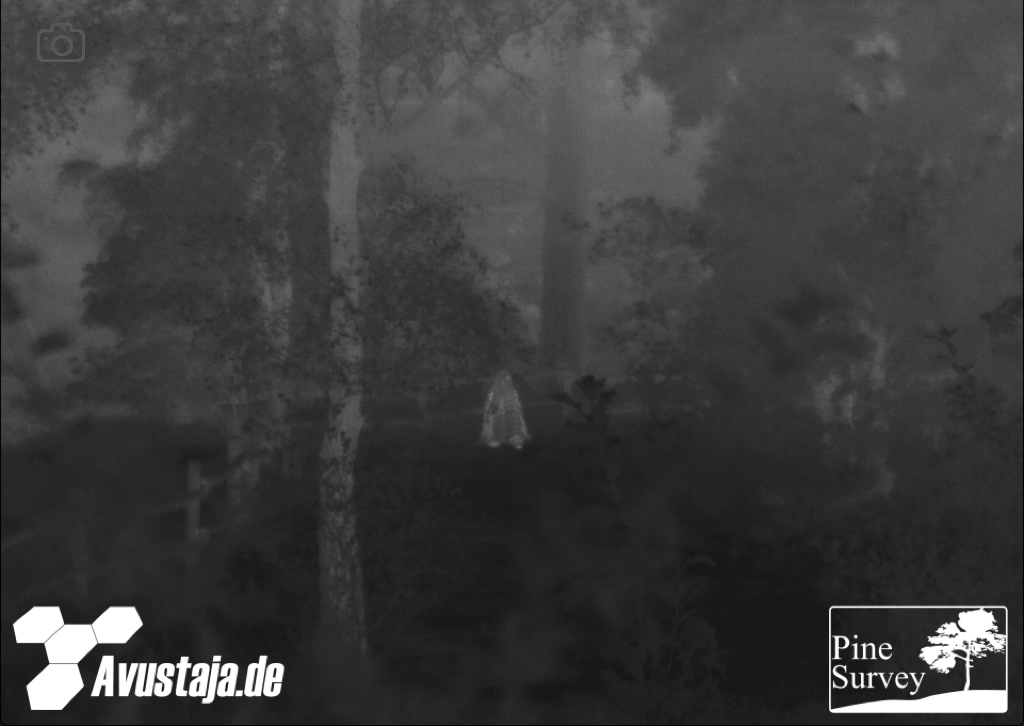
Having looked at several items with no dedicated thermal-mitigation purpose, it is time to look at one in particular. The British Sniper Ghillie “Thermal Individual Camouflage Suit (MK.I)” by Roctec/CQC 2001 was specifically designed to give snipers a thermal camouflage solution. This suit was not complete, but good enough to get an impression.
Looking at the date when it was fielded, it is also important to note that thermal capacities looked different 20+ years ago. The concept of the ghillie is to create air pockets by several layers of mil-spec mesh material that also features a DPM print and NIR treatment.
Looking at the ghillie at close range one can see the repetitive pattern of the mesh pockets. One can also see that the areas with contact to the body quickly heat up and are hot-white under thermal vision. That being said, the human silhouette is being broken up quite nicely and the fact that the face is covered with a cloth of the same material prevents any kind of chimney effect. The folds where the fabric is thinner, reveal the contained heat of the body.
That being said, one can observe how at longer distances the silhouette of the body is broken up and that the heat signature aligns with the surroundings more effectively than the other items.
Even though there are dedicated trousers for the legs, they were not used for the sake of comparison to the other items tested in this article.
Other than the mesh, there is no additional insulation and therefore good ventilation, making it usable in warmer environments. It is also noteworthy that the ghillie does not use any special metal fabrics with thermal mitigation properties.
Item 8 – Space Blanket
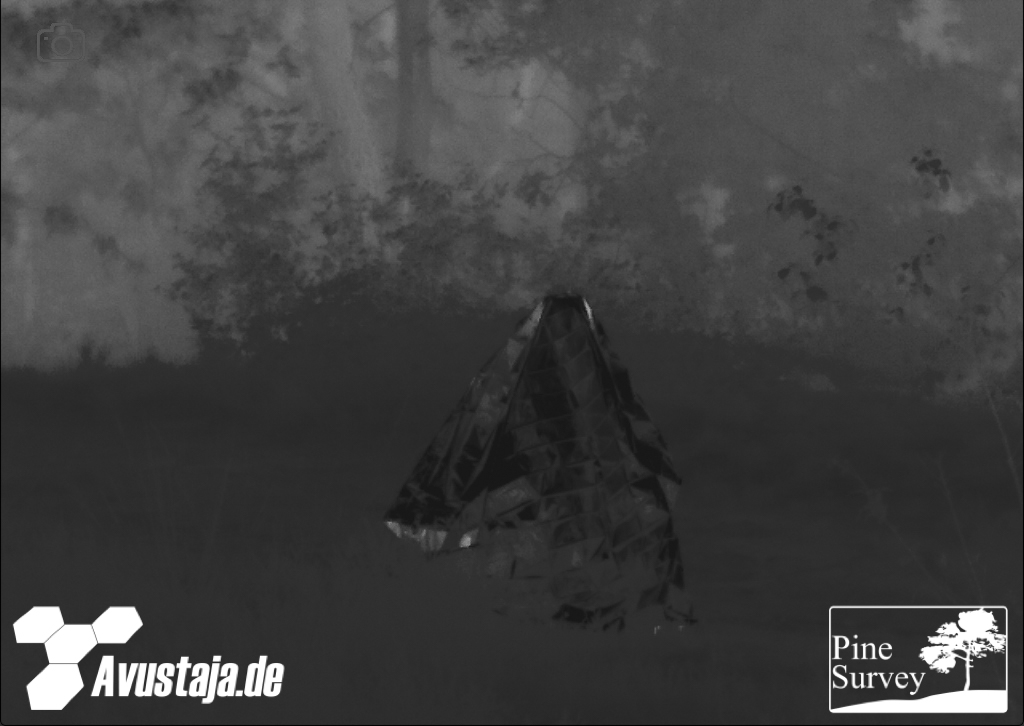
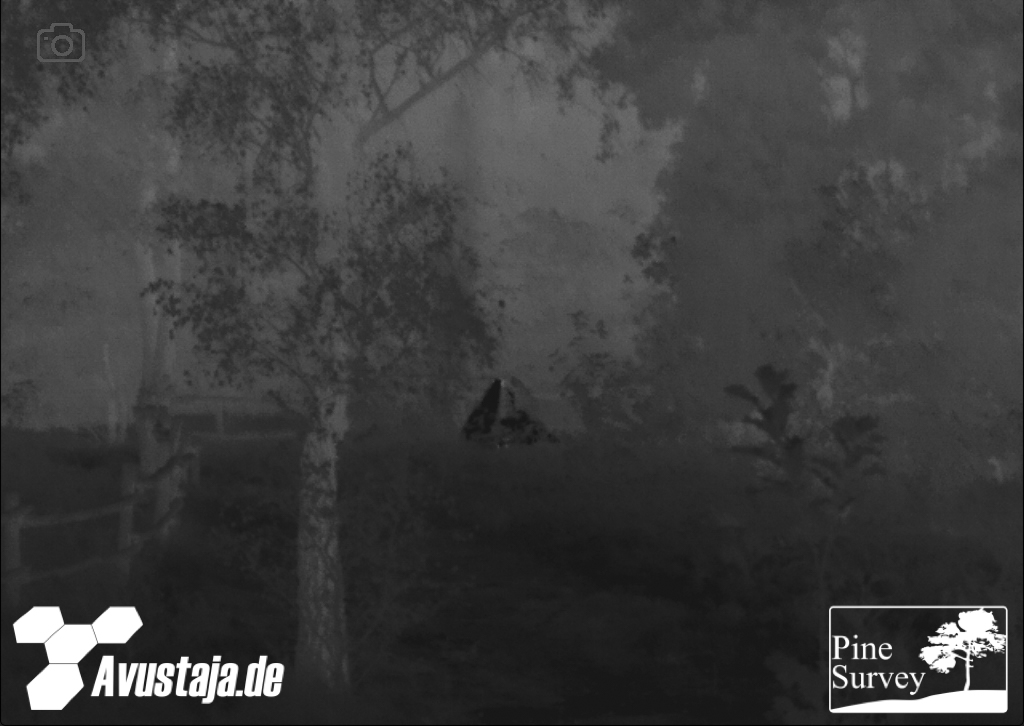
Space or thermal blankets are usually meant for emergency or first response purposes to keep individuals warm. The reflective surface is effective in minimizing heat loss through radiation, which is a significant way the body loses warmth, especially in cold conditions. The same principle makes them a more than effective, low budget thermal mitigation item, with some caveats.
First of all, to fully work and conceal, one needs to kneel or lie down. And even then, when looking at the thermal pictures the blanket is so effective in reflecting the body heat, that it creates a dark spot which even looks like unnatural CGI. As a result, we face a similar issue like the fleece blanket, in the sense that a negative/inverted color is created that attracts suspicion.
At the same time, the heat gets reflected inwards (as is the purpose of these blankets) with the result that it is not endurable for longer periods and also not suitable for dynamic movement. That being said, the heat signature is completely blocked.
So it comes to no surprise that you will find space blankets in daily use in Ukraine from both sides, as it is a low budget and effective tool.
Item 9 – Phantomleaf Python Poncho over fence
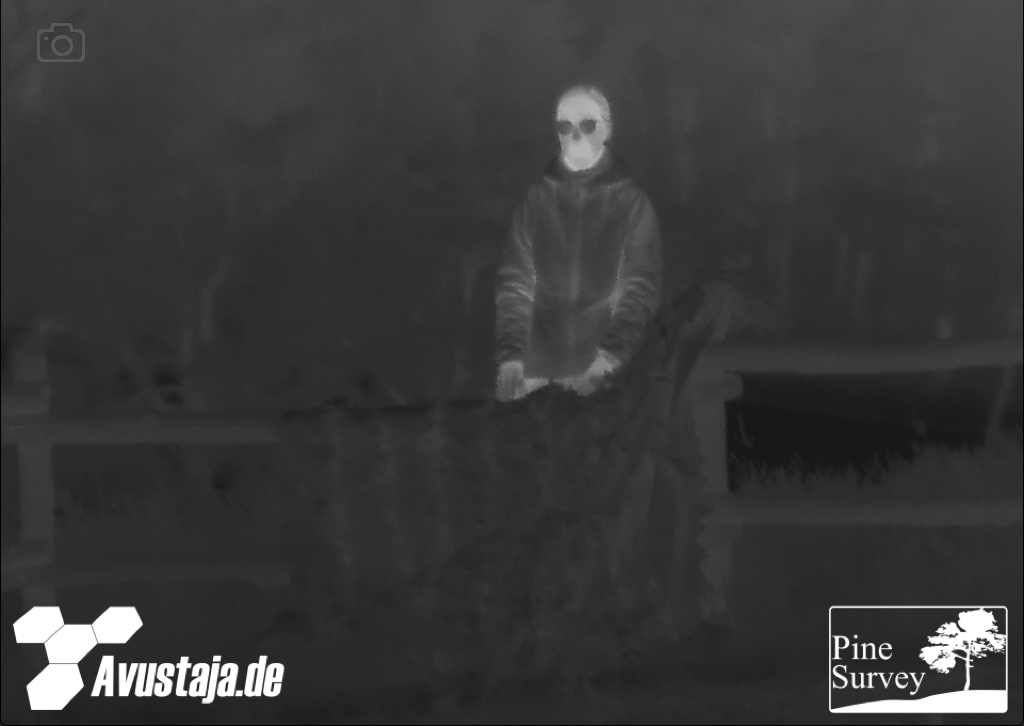
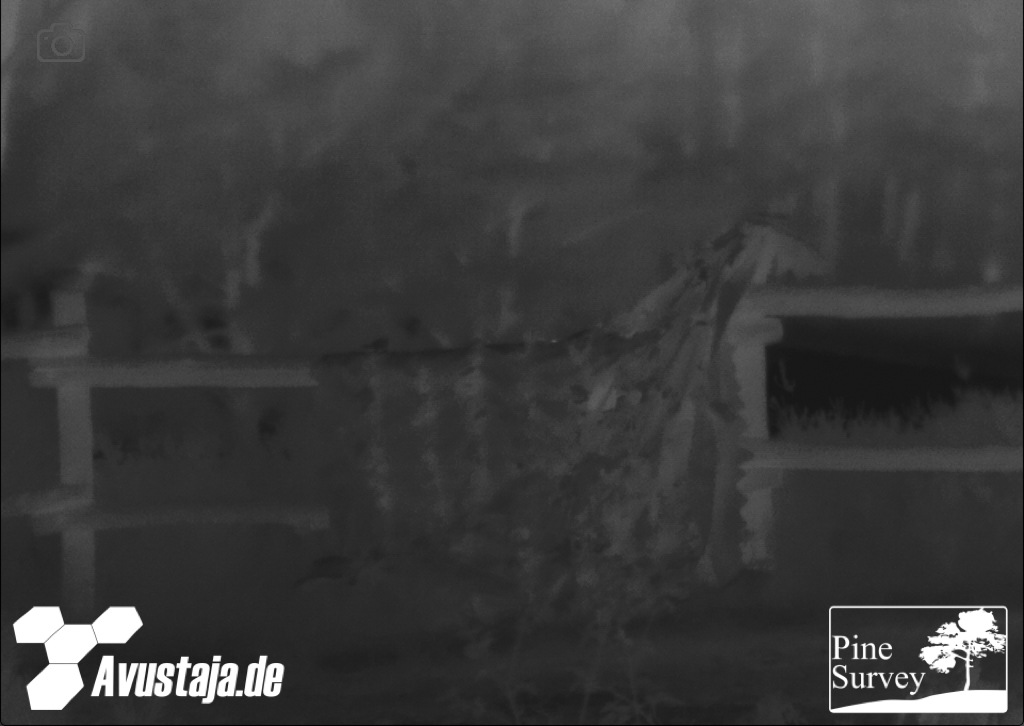
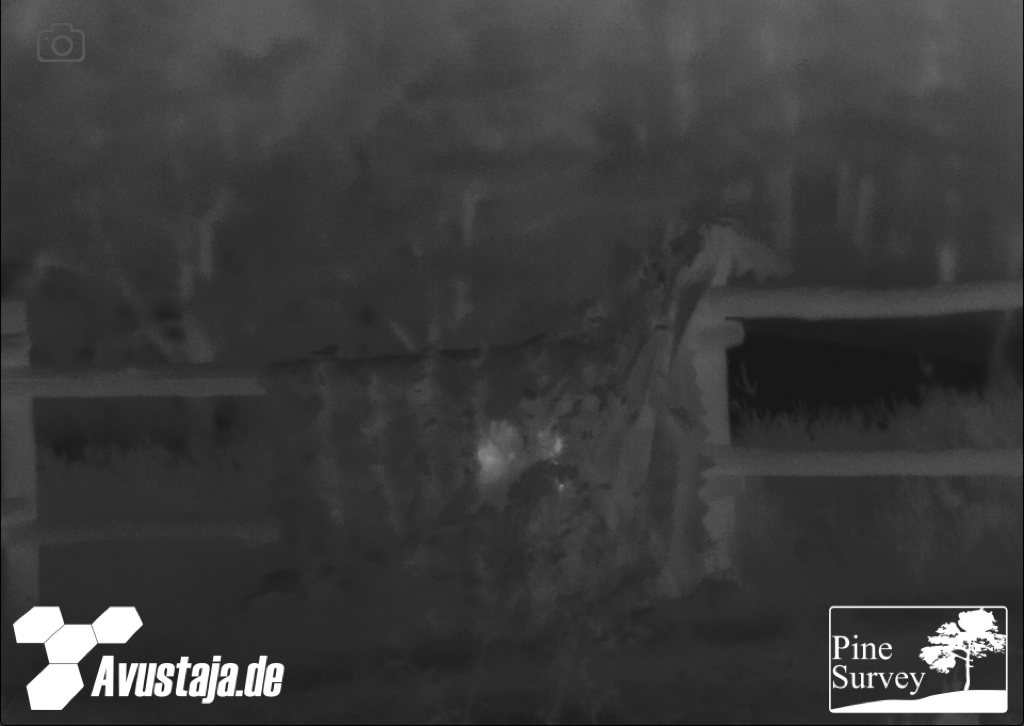
Having looked at all the different items, it might be worth looking at another option to conceal a thermal signature in a way that was hinted at already.
While the mesh material did not work as a thorough thermal mitigation when put over a fence, with a person hiding behind it, the Phantomleaf Poncho actually does mitigate the signature. As the material is dense enough and the added 3D elements act as additional layers, the cover is as good as behind dense foliage.
That being said, as soon as there is body contact, heat transfer takes place and is visible. As shown in the second picture, only the touch of the hand is enough. This applies to almost all of the materials shown in this article. Considering that the material used by Phantomleaf is a medium mesh, this is however a surprising performance.
Thermal vision – long distance 500m
Given the difference in technology it is worth noting that thermal devices have an advantage over night vision devices in terms of that they do not need any light to work with, and are able to pick up a signature at great distances.
These pictures show the silhouette of a person standing and kneeling 500m out in the plain – at the center of the image. At first with a basic Goretex jacket and Jeans, and then with the Phantomleaf poncho.
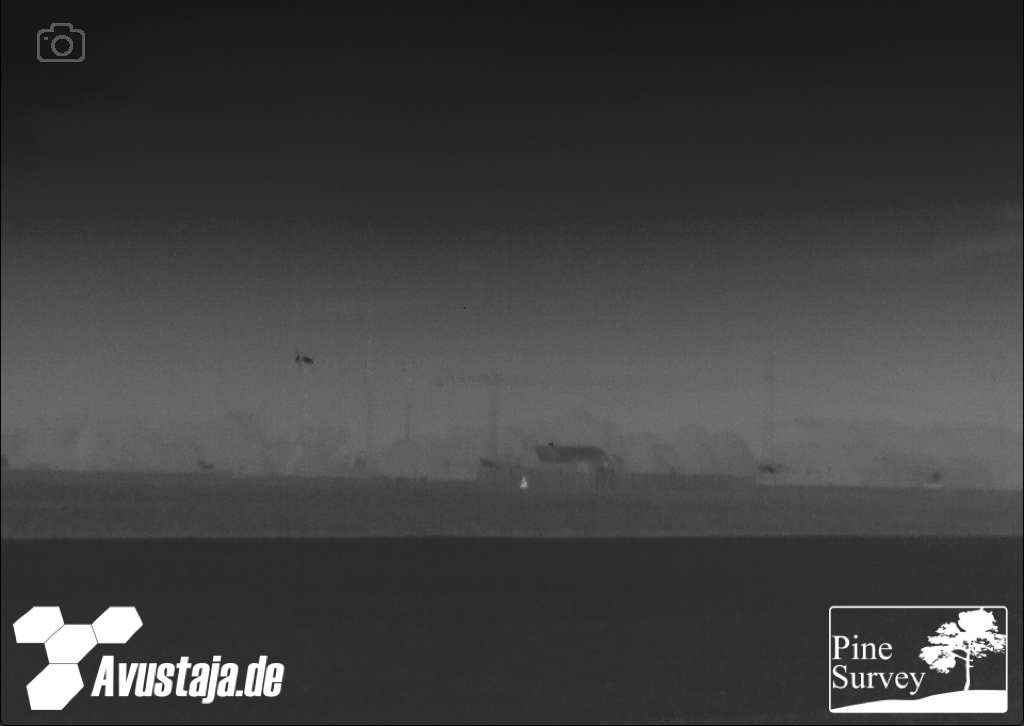
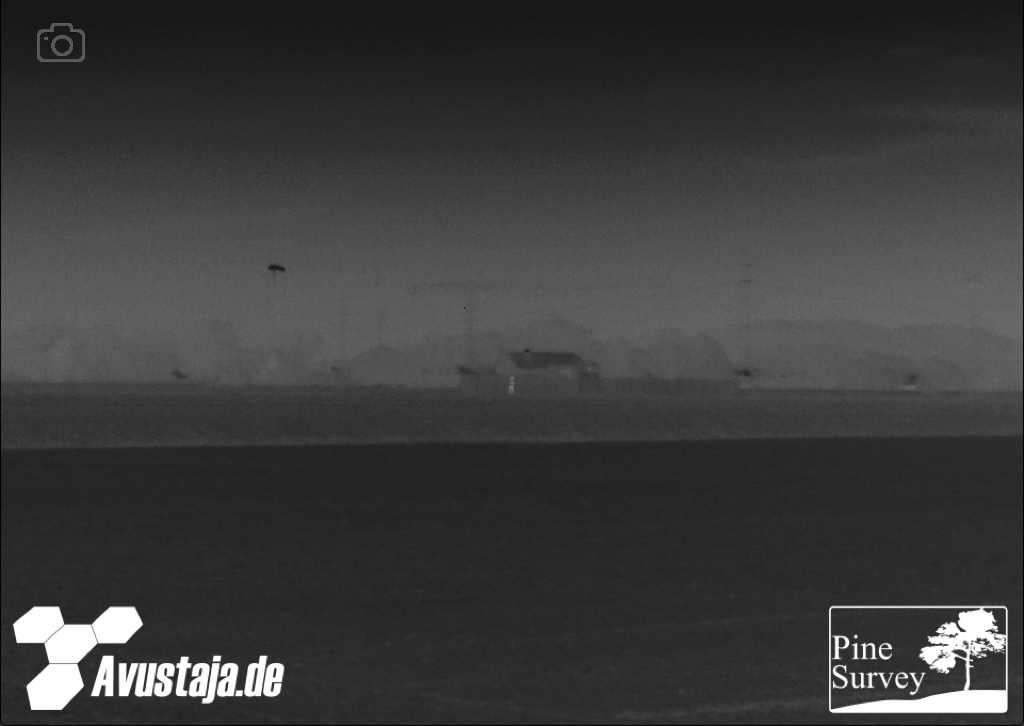
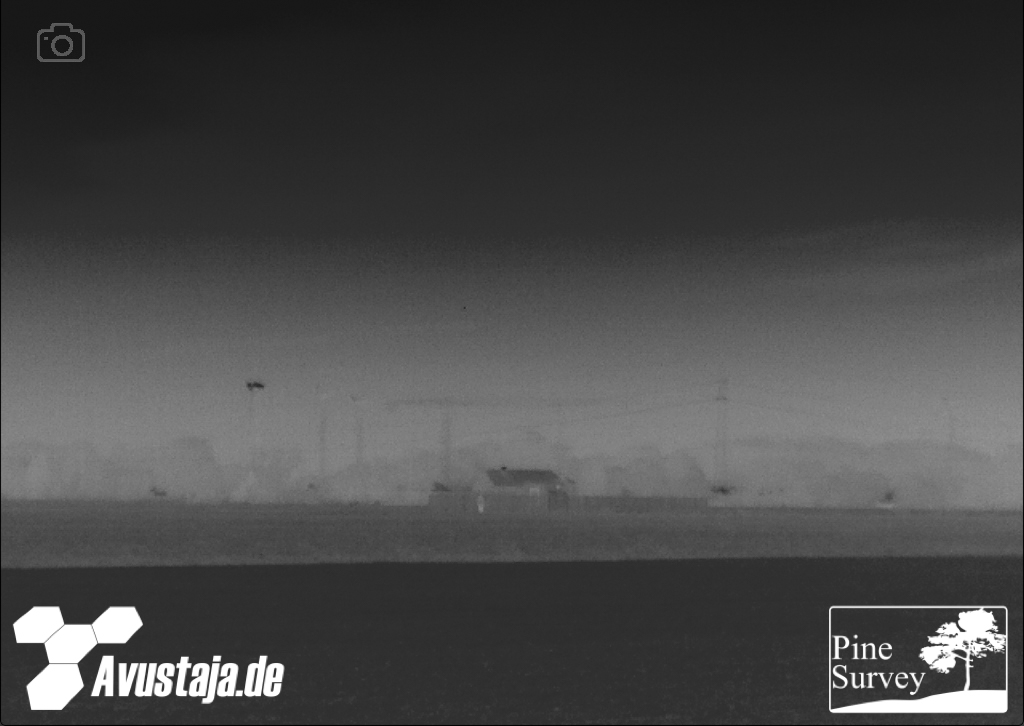
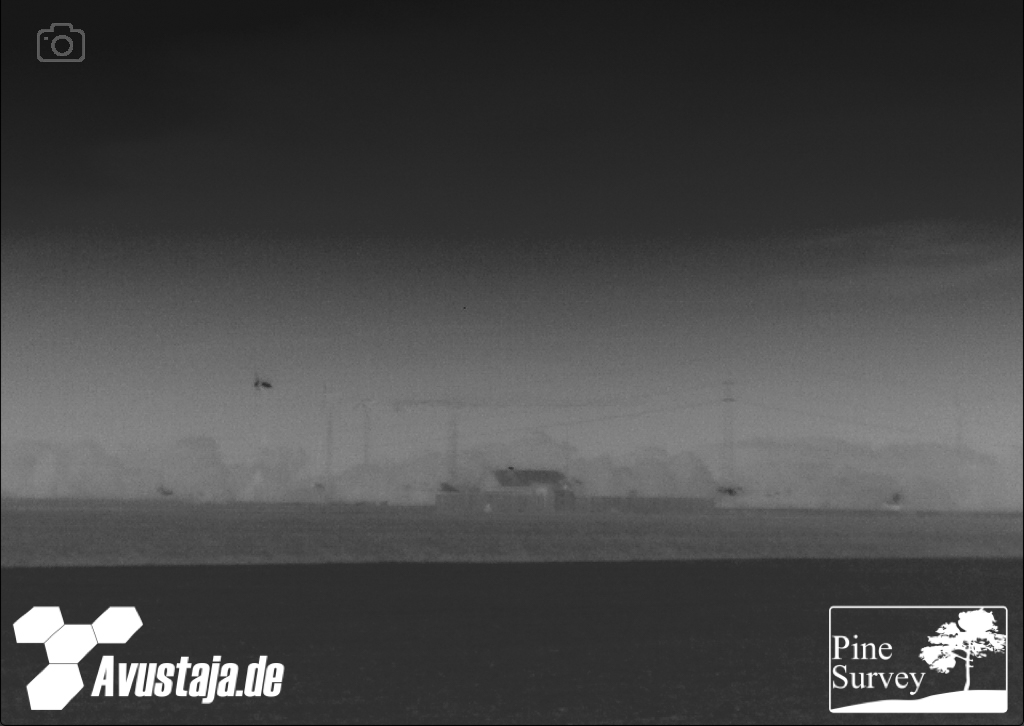
In comparison, there is a visible difference, but not because of any thermal mitigating properties of the fabrics used, but simply because of the applied physics of creating an air pocket and distance from the body. Having in mind these are only pictures, one can imagine how easy it is if the target is moving and the observer has the option to switch in between the different modes that separate signatures differently.
Conclusion
As a result of current global events, thermal devices have gained in importance more than they already have had before. As technology evolves, is getting smaller, more affordable/available and can be found in way more devices than several years back, it has become a crucial game changer on the battlefield.
Especially since it can be used by all tiers of the military, starting from the infantry right up to the air- and space capabilities.
Looking at the various items being used for this field test, one can say that it is very difficult if not impossible to protect yourself against thermal reconnaissance. The principle of “we own the night” does not apply anymore – especially as night vision devices cannot compete with thermal devices when it comes to the detection of living beings in the field.
Currently there are several companies providing “thermal mitigation technology“. As shown in this article, one has to be very careful in assessing the real life usability of such items, as they often work mostly by creating air pockets with mesh or by using mesh to create space between the body and the mitigation item.
As a result one can in fact achieve a certain level of mitigation, but only for a very short time and not in every environment or season of the year.
Having that in mind, it comes to no surprise that real thermal mitigation suits are actually ghillie type suits or larger ponchos with specifically treated fabrics that incorporate chemical/physical properties to block and/or regulate heat transfer. This in turn has its own ramifications for dynamic movement, battle ready garments and the challenge of not overheating the individual soldier.
To give you an example for such dedicated thermal mitigation garments, Avustaja had the luck to take a quick look at the Phantomleaf Adder TIR poncho. This item gives an impression of what is possible nowadays, and where technology is heading to in the future. The picture was taken in early Autumn at mild temperatures, but the surrounding terrain and the covered torso give an excellent comparison to the above pictured items. The face was left uncovered for demonstration purposes.
Another company worth mentioning would be ProApto, which manufactures a variety of camouflage solutions, including TIR garments. They also provide plenty of videos and pictures about the effectiveness of their thermal camouflage solutions.
With that being said I want to thank Avustaja for the joint project and work with the pictures!
Many thx to Max for providing the British Sniper Ghillie! And many thx to Phantomleaf for letting us use the last picture.
Thank you guys for your patience and for reading! This article was way overdue!
Take care

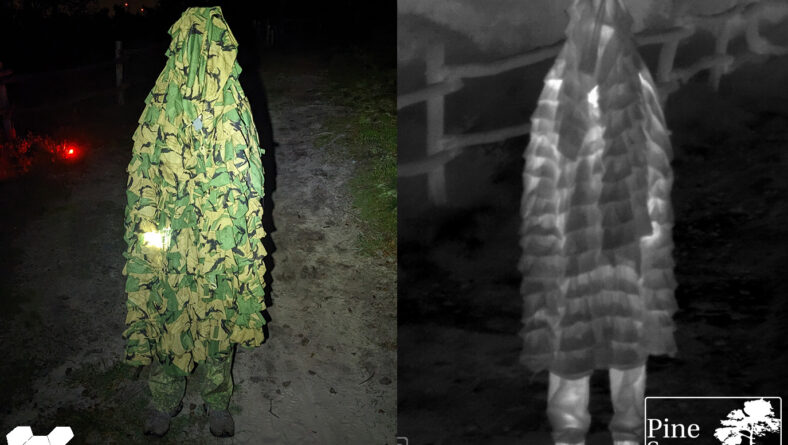
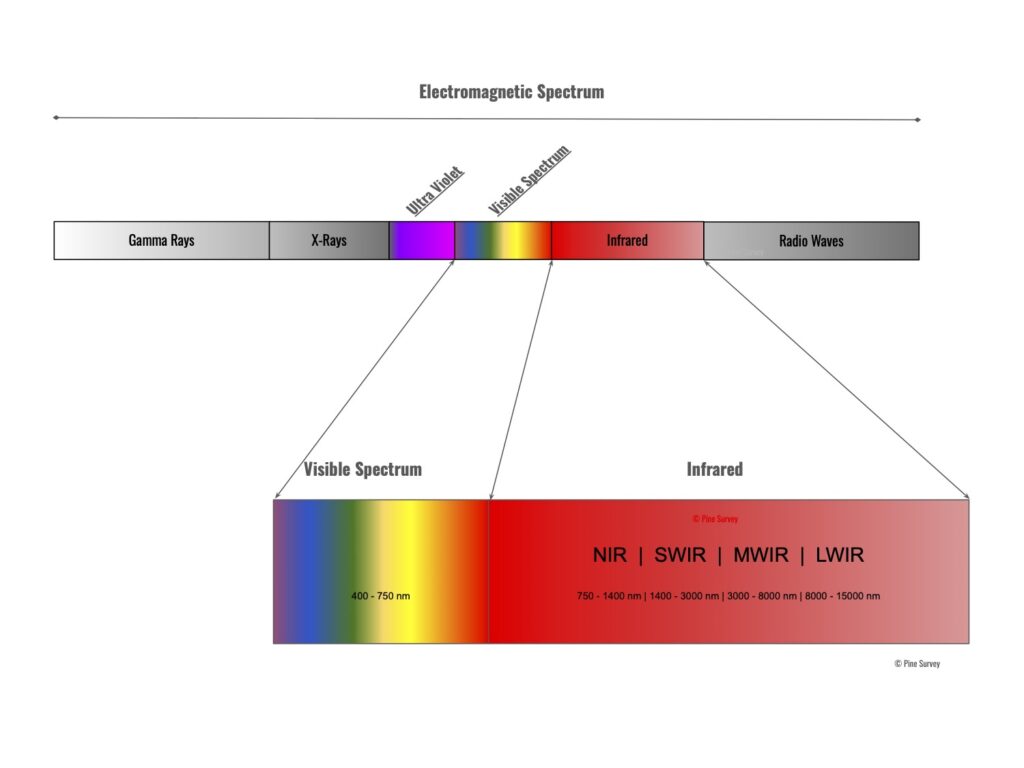

No Comment
You can post first response comment.